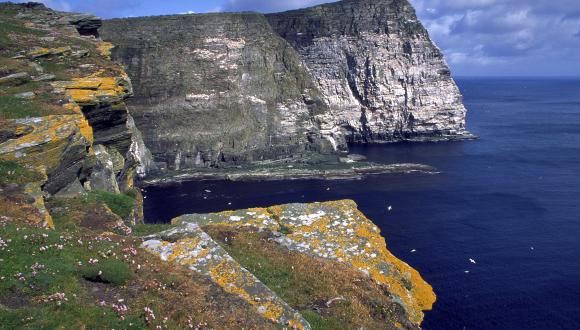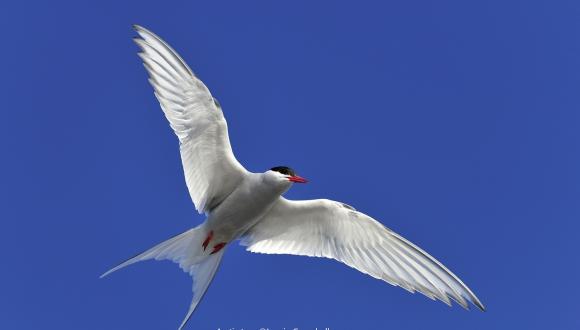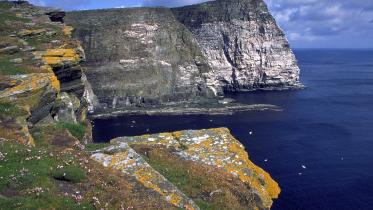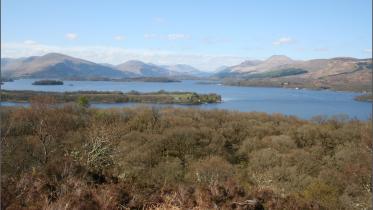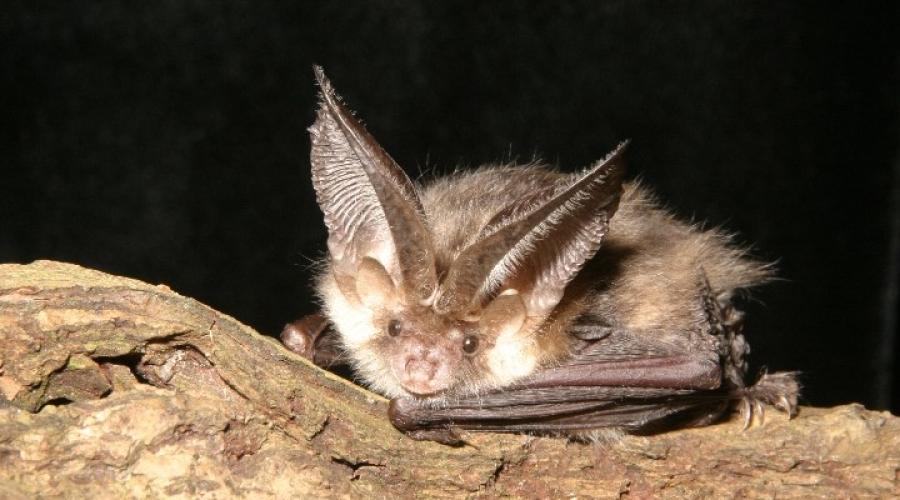
Multi-species conservation programme arrives in the Inner Hebrides and Argyll
14 July 2023
Species on the Edge partnership news release
Leugh ann an Gàidhlig / Read in Gaelic
An innovative and ambitious four-year-long conservation programme, Species on the Edge, has kicked off in the Inner Hebrides and Argyll.
Species on the Edge is a bold new partnership programme of NatureScot and seven conservation charities, dedicated to improving the fortunes of 37 threatened and vulnerable species found along Scotland's coast and islands.
Funded by the National Lottery Heritage Fund, the Species on the Edge partnership consists of:
- Amphibian and Reptile Conservation
- The Bat Conservation Trust
- Buglife
- Bumblebee Conservation Trust
- Butterfly Conservation
- NatureScot
- Plantlife
- RSPB Scotland
For the duration of the four-year-long programme, Species on the Edge will be active in seven areas across Scotland: Shetland; the North Coast; the East Coast; the Outer Hebrides; Orkney; Solway; and the Inner Hebrides and Argyll.
The Inner Hebrides and Argyll is the largest of the Species on the Edge project areas, stretching from Skye in the north, out westwards to Tiree, and south to the Mull of Kintyre.
Species on the Edge have a team of four project officers in the area, hosted by RSPB, Buglife, Butterfly Conservation, and Bat Conservation Trust. Together they are delivering activity to conserve 19 vulnerable species in the area including the great yellow bumblebee, medicinal leech, lapwing, curlew, four species of bat, and four species of burnet moth.
Much of the Inner Hebrides and Argyll is home to species that have disappeared from elsewhere in Scotland and it is thanks to generations of crofters, using low intensity agricultural practices, that many of Scotland’s threatened species continue to survive here. A core aspect of Species on the Edge activity in this area is to reinforce the value of High Nature Value (HNV) farming and to work closely with local land managers and crofting communities.
Species on the Edge People Engagement Coordinator, Sarah Duly, said: “People are fundamental to the success of the Species on the Edge programme and the wider effort to protect our vulnerable species. We are offering a range of training and engagement opportunities for people to get involved in practical conservation, citizen science, and creative events and projects. We’ll be listening to and working alongside our local communities to enable more people to connect with their natural heritage.”
Bat Conservation Trust (BCT) has four priority species included in the programme: common and soprano pipistrelles; Daubenton’s bat; and the brown long-eared bat. To date there is very little information about bat populations in the North and West of Scotland, so a large part of BCT’s work will be to carry out extensive monitoring to help understand how bat populations are faring throughout the area. BCT has been working with local community groups to raise awareness of bats and how to protect them and are offering training opportunities to people with an interest in helping to survey bats near them.
Species on the Edge Project Officer Cathryn Baillie said: “Bats make up almost a third of all mammal species in the UK, yet we know so little about them! They are also an indicator species, meaning that they can tell us a lot about the state of the environment. Data for Scottish bat populations is very poor, and we hope that by raising awareness and encouraging more people to look out for these amazing creatures, we can better understand and support them.”
Buglife has three priority species in the Argyll and Inner Hebrides project area: the short-necked oil beetle; medicinal leech; and the northern colletes mining bee. Once found only on Coll, increased awareness and surveying has resulted in short-necked oil beetle populations being discovered all over the Hebrides, with the beetle now also found on Barra, Islay, Tiree and Uist. Short-necked oil beetles are vulnerable to extinction due to their small, scattered populations. Over the next four years, Species on the Edge will be talking to landowners about how they can manage their land to provide the right conditions for the short-necked oil beetle and other invertebrate species.
With only two known populations of medicinal leech in Scotland, Buglife is leading crucial work to support the resilience of existing populations, working with the Kildalton Estate on Islay to secure habitat management for the lochan where the leeches are found and with the Royal Zoological Society of Scotland to establish a captive breeding programme with a view to introducing them to other lochs on Islay.
RSPB has a number of priority species included in the programme: wading birds including the curlew and lapwing, and migratory birds such as little terns and Greenland white-fronted geese. RSPB is also leading work on Coll and Tiree to monitor populations of one of the rarest UK bumblebees, the great yellow bumblebee.
The west coast of Scotland and the Inner Hebrides are home to several rare moths including the slender Scotch burnet, New Forest burnet, transparent burnet and the Talisker burnet. Conservation work, led by Butterfly Conservation, will focus on removing invasive species and working with landowners to achieve levels of grazing beneficial to the moths. Surveys so far this season have shown the presence of the burnet moths on Mull, Ulva, Gometra, Skye, Eigg, and mainland Argyll.
Species on the Edge are also working with Islay veterinary practice who are trialling a new technology with local livestock owners, using image-based software to test livestock for worms and fluke accurately and quickly, increasing efficacy and reducing overall use of veterinary medicines. Use of veterinary medicines negatively impact on the number of larvae found in livestock faeces. These larvae are an important food source for many species. Testing livestock and reducing use of veterinary medicines will help to improve soil health and increase abundance of dung invertebrates. The testing also benefits farmers, improving animal welfare and potentially reducing costs through reduction in treatment.
Species on the Edge will be at the following shows in July and August:
- Tiree Agricultural Show – 21st July
- Bunessan Show on Isle of Mull – 4th August
- Skye Agricultural Show – 5th August
- Salen show on Isle of Mull – 10th August
- Islay, Jura and Colonsay Agricultural Show – 10th August
To keep up to date with the Species on the Edge programme, go to the website and follow along on Twitter @SpeciesEdge and on Facebook @SpeciesontheEdge.
You can also sign up to the Species on the Edge mailing list
